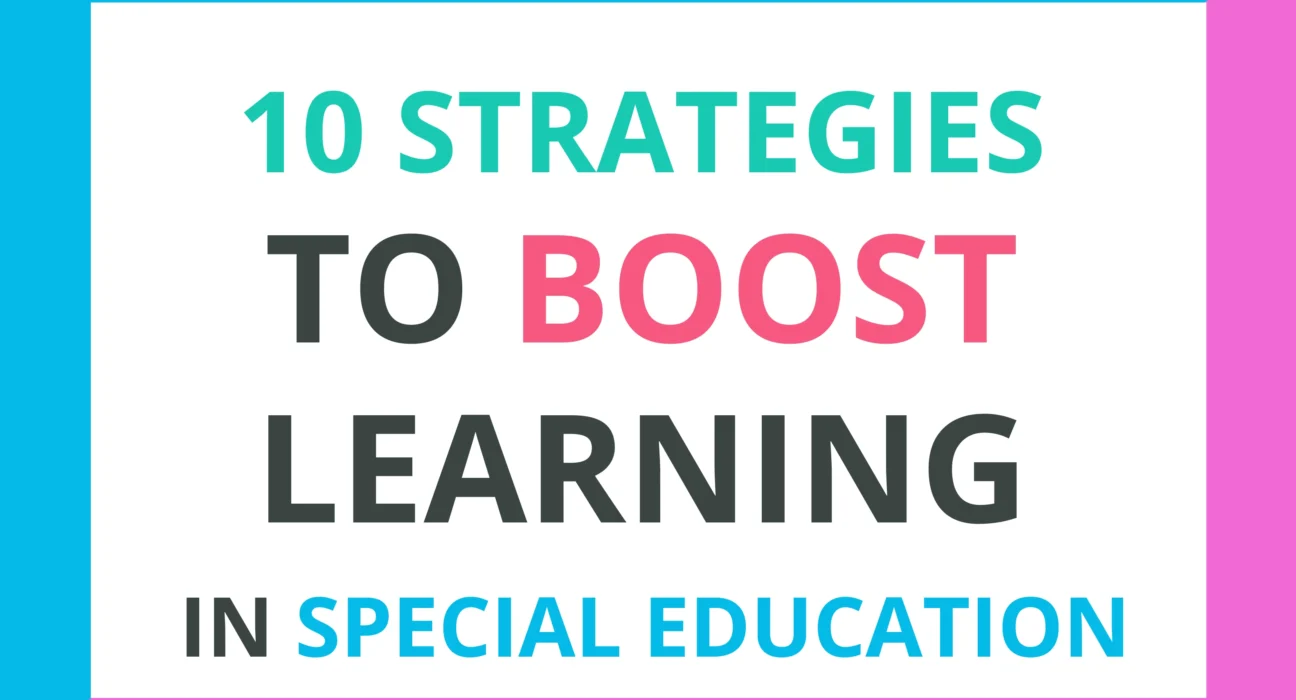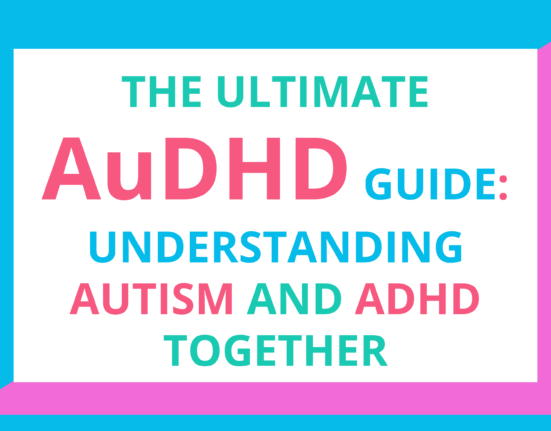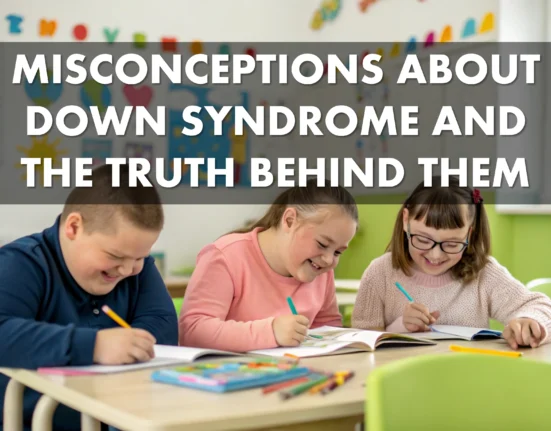In special education, the goal is to create an environment where every student can thrive. To achieve this, educators must employ various strategies that address the unique needs of each student. Below, you will find ten strategies that are crucial for boosting learning in special education. Each strategy is carefully crafted to enhance the educational experience, ensuring that students with special needs receive the support they require to succeed.
Table of Contents
1. Understanding the Unique Needs of Special Education Students
The foundation of effective special education lies in understanding the distinct needs of each student. These needs can range from cognitive and physical disabilities to emotional and behavioral challenges. Recognizing these differences allows educators to tailor their teaching methods and provide individualized support. This approach ensures that each student receives an education that aligns with their abilities, helping them overcome obstacles and achieve their full potential.
2. The Importance of Individualized Education Plans (IEPs)
IEPs are essential in special education as they outline personalized goals and the specific strategies needed to achieve them. These plans are developed collaboratively, involving teachers, parents, and specialists, to create a comprehensive approach tailored to each student. Regular reviews and updates ensure that the IEP remains relevant as the student’s needs evolve, providing a roadmap for success in their educational journey.
3. Using Assistive Technology for Enhanced Learning
Assistive technology can be a game-changer in special education, offering tools that cater to the unique challenges faced by students with disabilities. Whether it’s speech-to-text software, adaptive keyboards, or communication devices, these technologies help students access the curriculum and demonstrate their learning in ways that might not be possible otherwise. Educators must select the right tools that align with the student’s IEP goals and ensure they are properly integrated into the learning process.
4. Incorporating Multisensory Learning Techniques
Multisensory learning engages multiple senses simultaneously, making it easier for students with special needs to grasp and retain information. This approach can involve using visual aids, tactile activities, auditory cues, and kinesthetic exercises to teach new concepts. For example, using physical objects to teach math, integrating music into reading lessons, or conducting hands-on science experiments can make learning more interactive and accessible for all students.
5. Building a Positive Learning Environment
Creating a positive learning environment is critical for the success of special education students. This environment should be safe, supportive, and inclusive, allowing students to feel valued and understood. Establishing clear routines, maintaining consistent expectations, and focusing on positive reinforcement can help create a stable and encouraging atmosphere. A classroom that promotes respect, kindness, and collaboration will enable students to engage more fully in their education.
6. Promoting Social and Emotional Development
Social and emotional skills are crucial for students in special education, as these abilities impact their academic performance and overall well-being. Educators can support social and emotional development by incorporating activities that foster self-awareness, emotional regulation, and empathy. Techniques such as role-playing, group discussions, and social stories can help students navigate social interactions and manage their emotions more effectively.
7. Differentiated Instruction: Catering to Diverse Learning Needs
Differentiated instruction involves modifying teaching methods to meet the varied learning needs of students in special education. This strategy allows educators to present content in different ways, offer multiple pathways for students to engage with the material, and provide various options for demonstrating understanding. Differentiation ensures that all students, regardless of their abilities, can access the curriculum in a way that is meaningful and relevant to them.
8. Collaborating with Parents and Guardians
Parents and guardians are essential partners in the education of students with special needs. Effective collaboration between educators and families ensures that students receive consistent support both at school and at home. Regular communication, involving parents in the IEP process, and providing resources for home-based learning can strengthen this partnership, leading to better outcomes for the student. When educators and families work together, they can create a more cohesive and effective educational experience.
9. Implementing Behavioral Interventions and Supports
Behavioral challenges are common in special education, and addressing these effectively is crucial for creating a productive learning environment. Implementing Positive Behavioral Interventions and Supports (PBIS) can help manage and improve student behavior. PBIS focuses on teaching and reinforcing positive behaviors, using data to track progress, and providing interventions that are tailored to the individual needs of the student. This proactive approach helps reduce disruptions and supports students in developing appropriate social skills.
10. Fostering Independence and Self-Advocacy
One of the long-term goals of special education is to help students develop the skills they need to become independent and self-advocating individuals. Educators can foster independence by giving students opportunities to make choices, solve problems, and take responsibility for their learning. Teaching self-advocacy involves helping students understand their strengths and challenges, communicate their needs, and seek out the support they require. These skills are essential for students to navigate school and life beyond the classroom successfully.
These ten strategies provide a comprehensive approach to boosting learning in special education. By understanding the unique needs of each student, utilizing assistive technology, creating a positive learning environment, and fostering independence, educators can significantly enhance the educational experience for students with special needs. The collaboration between educators, families, and students is key to creating an inclusive, supportive, and effective learning environment where all students can succeed.

FAQs
What is an Individualized Education Plan (IEP)?
An IEP is a customized educational plan designed to meet the unique needs of a student with disabilities. It outlines specific goals and the support services needed to achieve them.
How can assistive technology support students in special education?
Assistive technology provides tools that help students overcome learning barriers, such as communication devices, reading aids, and software that supports writing and math skills.
What is differentiated instruction, and why is it important in special education?
Differentiated instruction involves tailoring teaching methods to meet the diverse needs of students. It is crucial in special education to ensure that all students receive instruction that is appropriate for their abilities and learning styles.
How can teachers promote social and emotional development in special education?
Teachers can support social and emotional development by incorporating activities that build self-awareness, empathy, and social skills, such as group discussions, role-playing, and social stories.
Why is collaboration with parents important in special education?
Collaboration with parents ensures consistency and support across school and home environments, helping to reinforce learning and address challenges that may arise outside the classroom.
What role do extracurricular activities play in special education?
Extracurricular activities provide students with opportunities to explore interests, develop social skills, and build confidence, contributing to their overall development and well-being.
- Strategies to Motivate Students in Special Education
- Effective IEP Strategies for Special Education Success
- National Center for Learning Disabilities (NCLD)






